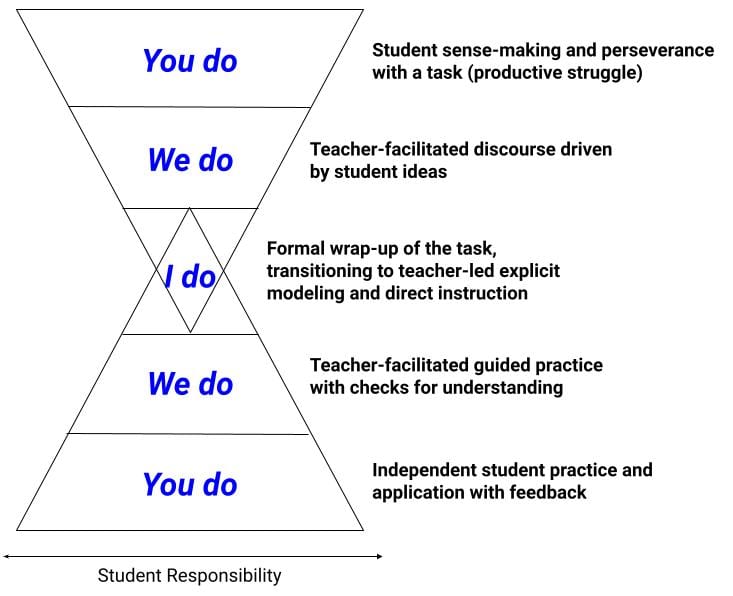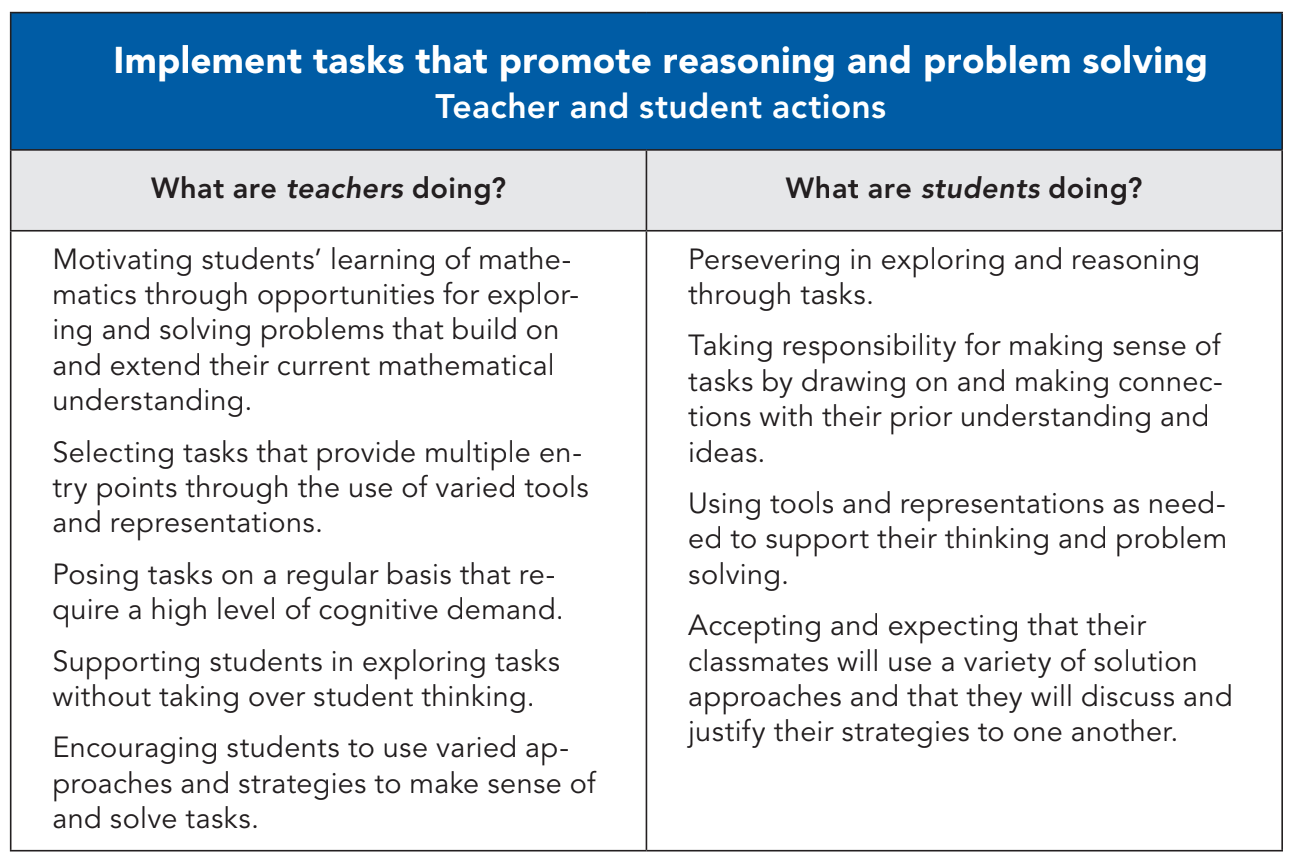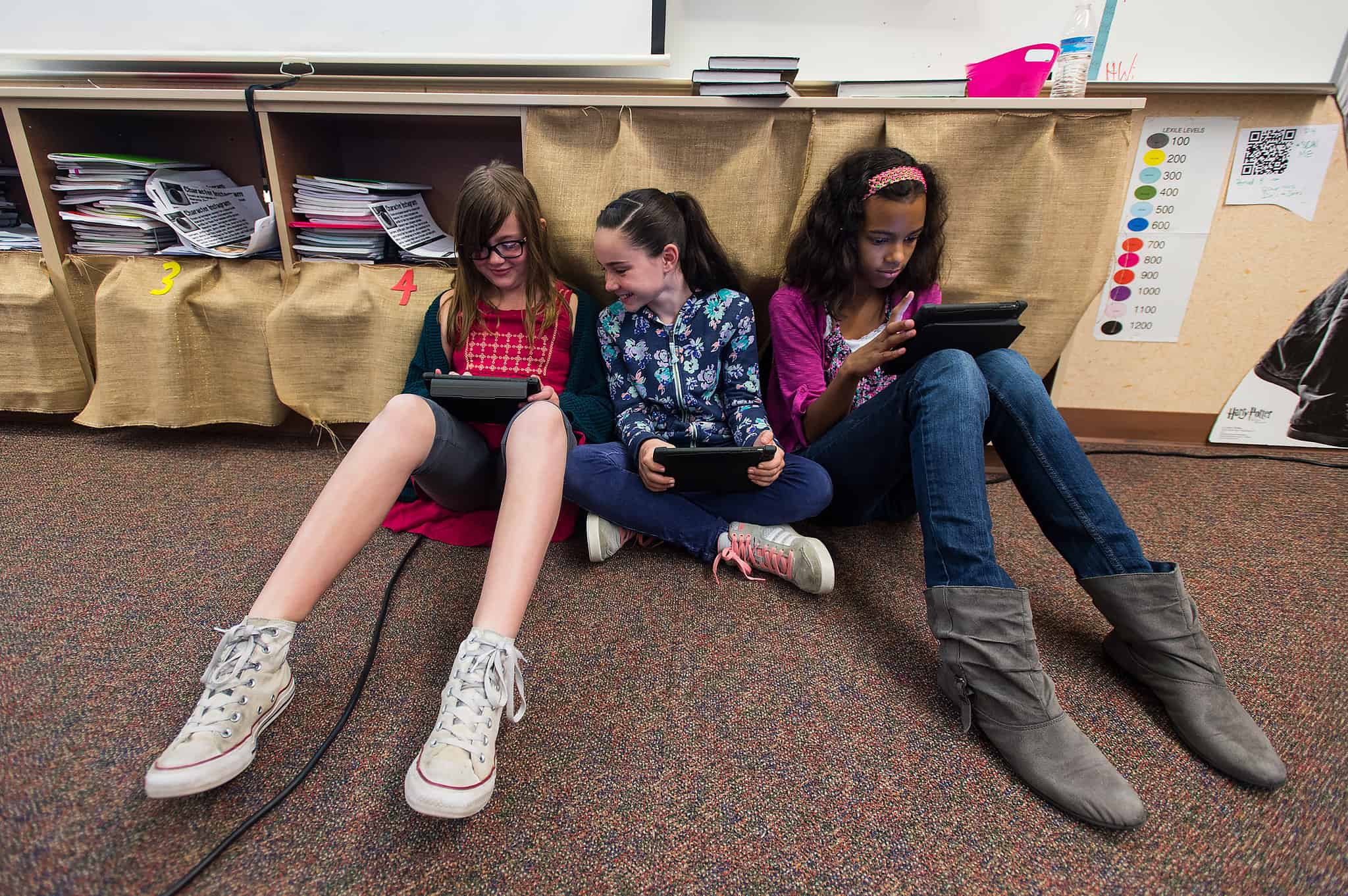January 2024
Elevating Instructional Focus for All
Happy New Year! As we enter this critical instructional stretch from now until Spring Break, how might we highlight the Plan & Prepare and Reflect & Adjust domains in the St. Vrain Valley Schools Instructional Framework in supporting all students in their learning and growth? When reflecting on winter i-Ready data and looking ahead to upcoming units, how might we…
- collaborate with colleagues and use Colorado Academic Standards, district curricular resources, student performance data, and advanced technologies to develop dynamic instruction that meets student’s needs?
- incorporate scaffolding, extensions, varied grouping, and active learning strategies, aligned with the gradual release of responsibility model of instruction?
- gather, analyze, interpret, and visualize data to glean meaningful information which can be used to make informed instructional decisions?
- engage in collegial discourse to analyze student learning outcomes, implement high leverage practices, and advance academic excellence by design?
In the coming weeks, what scaffolds and supports might we gradually remove as students continue to gain greater independence in demonstrating their learning? If targeted reteaching and content prioritization are necessary in supporting achievement with grade level expectations, consider the priority evidence outcomes identified in our Unit Plans that specify the most essential skills and concepts for each grade in ELA, math, and social studies.
And finally, as we make our way into the second half of our school year, how might we continue to access instructional resources and district progress monitoring tools to maintain, verify, and accelerate the ambitious, yet attainable growth goals for all students?
Math Updates
Reframing “I Do – We Do – You Do” in Mathematics
For many adults, the Gradual Release of Responsibility (commonly known as “I Do – We Do – You Do”) approach to learning mathematics was typical. As long as the practice exercises matched the guided practice and direct instruction, some success was probable. Furthermore, as long as quizzes and tests matched the practice exercises, one could believe they were good at math.Today, we recognize that this exclusive pattern of teaching, learning, and assessment can promote mimicking instead of true mathematical thinking and application of mathematical concepts. So how might we bring more thinking and less mimicking into our classrooms with language-rich learning environments? Check out this article for balancing the Gradual Release of Responsibility and thinking classrooms.

enVisionmath2.0 offers ample opportunities for “You Do – We Do – I Do” tasks. Whether it’s the Solve & Share or an application exercise from the Math Practices & Problem Solving page, students need familiarity with productive struggle and persevering through non-routine, non-procedural tasks and exercises. This is in alignment with one of the Mathematics Teaching Practices from NCTM:

Looking at CMAS frameworks, Expressing Mathematical Reasoning is 20-22% of the total test points. Modeling and Application is 18% of the total test points. That’s 38-40% of the total test points rooted in multi-step problem solving tasks where students have to apply mathematics, make mathematical arguments, or critique the reasoning of others. The revised Topic Assessments linked in the Unit Plans contain reasoning items similar to those on CMAS.
Distributed practice & ongoing mixed review (retrieval practice) supports students in remembering and applying concepts from the fall. In addition to the Daily Common Core Review in enVisionmath2.0, a collection of tasks are linked in most Unit Plans under “Additional Assessment Tasks.” These tasks (including PARCC released items) can serve as meaningful retrieval practice opportunities for current and earlier Topics, along with elevating reasoning and problem solving for CMAS.
ELA Updates
Scaffolding: Important Considerations in the Gradual-Release Process
We know all too well the power of meaningful scaffolds for reading, writing, speaking, and listening. While beneficial for all of our students, scaffolding is essential for some of our learners and is intentionally inserted into the gradual-release process. And, as just discussed in our math section, frontloading the added layer of “you do – we do” to our gradual-release model allows us to determine which of our learners need exactly what scaffolds and when. Here are a few thoughts to consider as it relates to scaffolding:
Scaffolds should be inserted when we see evidence of unproductive struggle. Starting our instruction with a “you do,” allows us to see who needs what and where in the learning process relative to lesson outcomes.
“Scaffolds should be predicated on formative assessment, watching learners, and listening to them think” (Fisher & Frey, 2023). Again, providing students an opportunity to “try and apply” during the initial “you do – we do” stage of a lesson introduction provides us with the formative information we need as we consider what scaffolds students might need.
Scaffolding is a temporary structure designed to be removed – too much scaffolding can deplete learner independence. When scaffolds remain in place past their need, they become a permanent expectation for students and run the risk of producing “mimicking” ( as discussed above). In our best intentions, we end up holding scaffolds in place because we think students aren’t ready, rather than giving them the opportunity to try it on their own. In particular, when it comes to student writing, scaffolds can lead to students “plugging words into a formula” without conscious engagement, thinking, and perseverance. Too many scaffolds during the writing process can rob students of the opportunity to generate their own ideas in their own words, using their own style and voice.
Scaffolds can be a powerful tool in the learning process provided we are conscious of when, why, and how to use them en route to student independence of learning outcomes.
For more on important considerations for scaffolding, see this post from Douglas Fisher and Nancy Frey (2023).
Social Studies Updates
Improving Comprehension of Informational Text Through Vocabulary Instruction
Research tells us that the more young students are exposed to the content and skills in social studies, the better they score in reading. This is because through the teaching of social studies, students are building background knowledge as well as increasing their vocabulary knowledge. Focusing on vocabulary instruction in elementary social studies is one way to increase comprehension of informational text. Plus, many of the academic vocabulary terms in social studies are very conceptual. Take, for example, the word “immigration.” If students are able to really grasp the meaning of this word and can understand it in texts and use it in conversations, then they are engaging in deep thinking about an important social studies concept. We know the best ways to support students with this is through word study and word play over long periods of time.
What does this look like in the elementary classroom?
- Teacher and students strategically choose Tier II and Tier III words for word study from authentic texts students are engaged with
- Teacher employs vocabulary strategies that include the following (adapted from Diamond and Gutlohn’s book, Vocabulary Handbook):
- Explicit vocabulary instruction
- Word-learning strategies (dictionary use, morphemic analysis, contextual analysis, cognates, etc.)
- Fostering word consciousness through word play such as word origins and history
- Multiple exposures in multiple contexts
- Check out Tim Shanahan’s Vocabulary Instruction Examples blog!
February is Black History Month! This year’s theme is “African Americans and the Arts”
Black history is everyone’s history and should be taught throughout the year. However, February is a great time to celebrate the contributions and histories of Black Americans. Here is a document with curated resources you might consider using in your classroom.
Science Updates
3D Science Assessment Tasks
As we continue to move towards 3-Dimensional Science Instruction we must also introduce 3D assessment opportunities for students. 3D assessments, often called 3D tasks, integrate ALL THREE DIMENSIONS with equal (or perhaps roughly equal) emphasis and are built from a specific phenomenon.
This requires students to engage in Science and Engineering Practices to demonstrate their understanding of Disciplinary Core Ideas, using the big ideas in the Crosscutting Concepts to add depth and connectedness to their understanding of the content knowledge.
These assessments are considered to be more robust and accurate measures of student learning compared to traditional assessments that focus on recall and memorization. They are also what your students will experience on their 5th grade CMAS exam.
Your Mystery Science Assessments are a good place to start, they are quality 3D assessments. For additional tasks, the spreadsheet below is a collection of existing assessments from across the country designed to support implementation of 3D science instruction. The openly available tasks represent a wide range of task types and purposes. This spreadsheet is also located in your Science Unit Plans under Teacher Notes and is broken down to grade and Earth, Life and Physical science standards and concepts.
It is a good idea to introduce these types of assessments to students from Kindergarten to 4th grades to better prepare them for success demonstrating their science knowledge in 5th grade. Combined Elementary 3D Task Inventory
Professional Development Opportunities
The following classes are available for registration through the Office of Professional Development. All classes are in-person unless otherwise noted.
- Culturally Responsive Instruction of Native American Students (asynchronous course; 1.5 credits)
- Mathematical Tasks & Classroom Discourse (Saturday, January 27; 8:00 AM – 4:00 PM; 0.5 credit)
- Developing Number Sense in K-2 within 5, 10, and 20 (Saturday, March 9; 8:00 AM – 4:00 PM; 0.5 credit)
- Essentials in Evidence-Based Literacy Instruction (new course sections now available; 2 credits)

Contact Us!
Karen Smith
K-5 Language Arts Coordinator
303-702-7746
[email protected]
@smithkaren51 & @SVVSDLA
Mike O’Toole
K-12 Science Coordinator
303-682-7232
[email protected]
@SVVSDScience
Greg George
K-12 Mathematics Coordinator
303-682-7247
[email protected]
Visit Math News & Updates
@SVVSDMath
Jenny Pettit
K-12 Social Studies
Coordinator
303-702-7547
[email protected]

